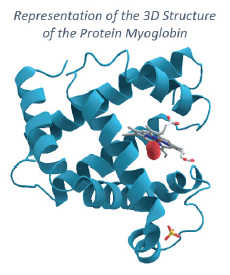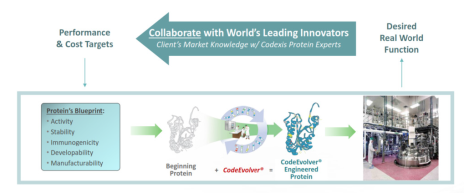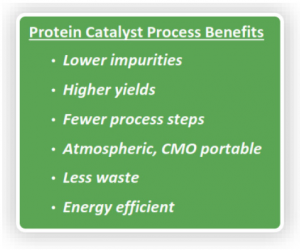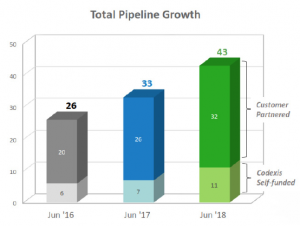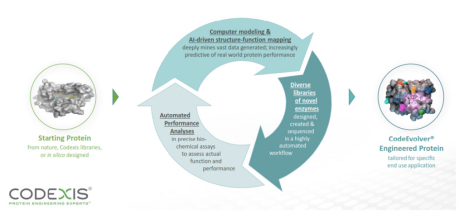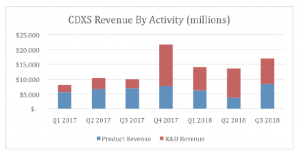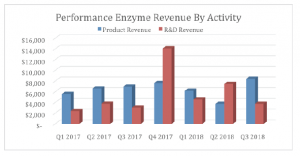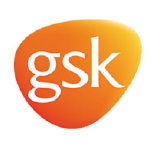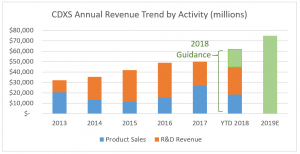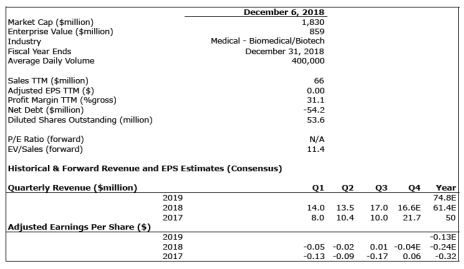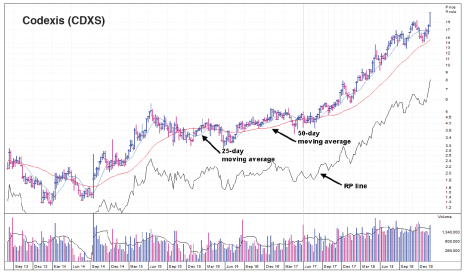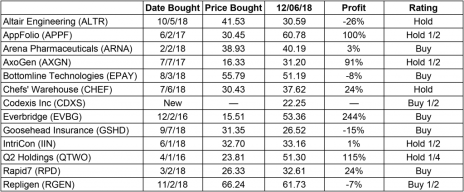Today’s new addition is, like last month’s, a stock that has bucked the broad market’s trend and gone up!
It’s an industrial biotechnology stock. And the secret to its success lies in a proprietary technology platform that uses artificial intelligence and machine learning to create new proteins for use in various industries.
Cabot Small Cap Confidential 235
[premium_html_toc post_id="165820"]
THE BIG IDEA
Let’s talk proteins.
Proteins are the large, complex molecules that do the lion’s share of the work in your cells and are essential for all living organisms. They’re made up of hundreds of thousands of amino acids, smaller units that are attached in long, 3D polypeptide chains.
The sequence of amino acids determines each protein’s structure and function. There are several types of proteins, including antibodies, enzymes, structural proteins, storage proteins, transport proteins, etc.
Today, we’re mostly going to focus on enzymes.
Why enzymes? Because these are the proteins that make biochemical reactions happen. They’re often referred to as catalysts. And like all catalysts, enzymes make reactions happen faster than they otherwise would. Sometimes, much faster.
They do so by lowering the activation energy, which increases the reaction rate. The interesting thing about enzymes is that they are very specific, and they don’t change the equilibrium of a reaction.
A good example are the enzymes in biological washing powders that break down stains on clothes.
Another example is meat tenderizer that breaks down proteins into smaller molecules, which makes the meat easier to chew.
A more exotic example is the class of oxidative enzymes, generically called luciferase, that produce bioluminescence, including those in fireflies, jellyfish and the sea pansy. MIT researchers are working on technologies using luciferase to make trees that glow. They have already made a small watercress plant glow for over three hours!
But we’re not investing in glowing trees today. We’re talking industrial biotechnology. And the most relevant example to that market is the use of enzymes in the synthesis of antibiotics.
Proteins are encoded by DNA and do just about everything needed to sustain life. By changing proteins scientists can modify aspects of life-sustaining activity. This includes the creation of life-saving drugs for rare diseases.
Knowledge of the relationship between DNA code and protein sequence has advanced to the point where researchers can essentially type a DNA code into a computer to generate a new protein. Without artificial intelligence (AI), machine-learning and big data technologies this wouldn’t be possible. In fact, 15 years ago it would take 20 scientists two years to engineer a new protein for a specific purpose.
Today, it can be done with a few scientists in just a few months. What do we do with all these engineered proteins and what problems do they solve?
We can:
• Manufacture drugs more affordably
• Make extremely pure drugs that meet rigorous quality standards
• Create healthier and better tasting foods at a lower cost
• Treat diseases more effectively with biologic therapeutics
• Create innovative molecules and manufacturing processes
• And much, much more
To date, most protein engineering work has been done for the pharmaceutical industry. That’s because when a company discovers a drug candidate it needs to also figure out how to produce it reliably, at scale, and at a reasonable cost. Protein engineering makes this possible in ways not attainable with naturally occurring enzymes.
But protein engineering is branching out into other industries as our understanding of proteins grows and the speed of new protein creation drops. You may be enjoying foods, sipping cocktails, washing clothes and treating diseases all because some scientist somewhere figured out that a specific protein could help you out!
This is a rapidly evolving industry. One of the emerging leaders is this month’s addition to Cabot Small-Cap Confidential.
The company’s biggest end market is pharmaceuticals manufacturing. It also has a foothold in the food ingredients industry. Most recently, this company has applied its technology platform to develop early-stage, novel biotherapeutics.
All together it’s targeting roughly $13 billion in end-market potential. With estimated 2018 revenue of just over $60 million, it’s just scratching the surface.
THE COMPANY/PRODUCT
Codexis (CDXS) is a protein engineering company that specializes in the discovery, development and commercialization of novel proteins, both as proprietary products and in partnership with customers. These engineered proteins, also known as biocatalysts and/or enzymes, are used in a wide range of industries to make manufacturing processes faster, cleaner and more efficient.
Historically, naturally occurring proteins have been used to produce or add desirable characteristics to many products people use on a daily basis. But in their natural form proteins come up against inherent barriers that limit their commercial potential.
Codexis has developed a proprietary protein engineering technology platform, CodeEvolver, to engineer novel proteins that overcome those inherent limitations. This opens the door to a huge range of uses in customer products, manufacturing processes, and other commercial dimensions.
When the California-based company started in 2002 it first targeted the pharmaceuticals industry. Over the 16 years that it’s been developing CodeEvolver Codexis has expanded into food and nutrition, molecular diagnostics, biotherapeutics, agriculture and other industries.
Its protein catalysts help customers manufacture products at a lower cost and with lower fixed capital investment. They also reduce the cost of development of complex chemical synthesis processes and can even eliminate entire steps from chemical production. And they allow for the manufacture of purer end-products with lower levels of impurities.
There’s no doubt the pace of innovation at the company is speeding up. That’s part of why it’s a compelling time to step in and make an investment.
Revenue growth is still a bit lumpy. It was up 17% in 2016, 2% in 2017 and should grow by 22% in 2018, and Codexis is not yet profitable. But the number of protein innovations being created, the speed of creation, the breadth of industries being targeted and the growing number of customers and collaborators all point toward a signficant market opportunity for the $1.1 billion market-cap company.
Over the last three years Codexis has grown its total pipeline of protein innovations from 26 to 43. Eleven of these are being developed on Codexis’ dime, while the remaining 32 are partnered with customers.
Nine of these customer-partnered protein innovations have been commercialized and are generating product and/or licensing revenue.
The below chart shows the trend by industry. For a project to be included in the pipeline it must have either generated revenue, or costs, of over $100,000 within the last two years. You can see the fastest growth is in drug development, novel biotherapeutics and molecular diagnostics.
A Primer on the CodeEvolver Protein Engineering Technology Platform
The CodeEvolver platform is designed to improve the cost and quality of pharmaceuticals and food ingredients, create novel biologic therapeutics, and allow the sequencing of minute quantities of DNA for in vitro diagnostics. It is powered by proprietary artificial intelligence (AI) based algorithms that continuously mine Codexis’ large and growing library of protein variants’ performance attributes.
The platform analyzes many thousands of protein catalyst candidates for each protein engineering project, screens them and validates them for high throughput under the relevant manufacturing conditions. It then spits out a list of engineered protein candidates and predictions of how they will perform.
The end goal is an optimized protein catalyst that allows for cost-effective processes that are easy to run in conventional manufacturing equipment. Ease of technical transfer from Codexis to customer is also a consideration.
One of the key selling points of the CodeEvolver platform is how quickly it generates engineered proteins for specific end-use applications. Use of AI and machine-learning technologies means it is continuously running and can test thousands of proteins per week. Projects that took the equivalent of 40 scientist two years just 15 years ago can be completed in a few months with a handful of scientists today.
Management says through the first nine months of 2018 the CodeEvolver platform designed, produced, performance tested and sequenced roughly half a million proteins.
For investors the takeaway message is that the CodeEvolver platform encompasses an integrated, multi-disciplinary to biocatalyst and process development. It’s not an easy thing to replicate. And it means each license Codexis sells is relatively valuable.
Codexis Is Targeting a $13 Billion Market Opportunity
Pharmaceuticals Market
Codexis’ CodeEvolver platform and products were first commercialized in the pharmaceuticals market. There is intense pressure on companies to discover new drugs, cut costs and increase speed to market for new treatments. The pressure grows when patents expire and generic competition enters the market. Pharma companies can use Codexis’ technologies in their manufacturing processes and process development solutions to reduce costs.
This remains the company’s biggest end market today and Codexis does business with 21 of the top 25 pharma companies in the world, including Merck (MRK) and GlaskoSmithKline (GSK), which have both licensed CodeEvolver to create proteins on their own.
It currently has 14 Phase 2/3 installations (up more than 100% over 24 months) and 12 drug processes on market (eight up and running, four under development). Management believes protein catalysts for pharma manufacturing represents a $1 billion market and that its solutions can improve roughly one-third of all small molecule drugs.
Novel Biotherapeutics
Recently Codexis decided to apply CodeEvolver to develop early-stage, novel biotherapeutics product candidates. It sees a $6 billion potential market for enzyme therapeutics and currently has one clinical and five preclinical programs in the pipeline. The most advanced internal asset is CDX-6114, for the potential treatment of phenylketonuria (PKU) disease in humans.
Industrial Enzymes: Fine Chemicals, Molecular Biology and In Vitro Diagnostic Enzymes
Protein catalysts have also been developed for the fine chemicals market, which includes food and food ingredients, animal feed, flavors, fragrances and agricultural chemicals. The most high-profile customer in this market is Tate & Lyle, an England-based supplier of food and beverage ingredients. Codexis has worked with
Tate & Lyle to develop enzymes for use in the manufacturing of that companies’ zero-calorie TASTEVA Stevia sweetener, a sugar substitute derived from the easy-to-grow stevia plant.
Codexis also sees potential to develop novel enzymes in other industrial markets. To that end it has developed a proprietary enzyme for customers using next generation sequencing (NGS) and polymerase chain reaction (PCR/qPCR) for in vitro molecular diagnostic applications. Management believes the industrial enzyme market potential now tops $6 billion.
How Codexis Reports Revenue
Codexis records revenue from two principal activities: (1) Product Sales and (2) Research and Development (R&D).
Product Sales
Product sales include revenue from protein catalysts (sold by the gram or kilogram), pharmaceutical intermediates and Codex Biocatalyst Panels and Kits. Most sales originate from purchase orders or supply agreements, some of which are long-term in nature.
Sales of protein catalysts and intermediates typically ramp up with specific customers as their drug candidates progress through trials and, if all goes well, to commercial-scale production. In certain situations, Codexis will begin selling protein catalysts to companies that already have a drug in commercial-scale production. While there is immense potential here, due to the regulatory hurdles involved with changing drug manufacturing processes this is a harder selling proposition.
Research & Development (R&D)
R&D revenue is generated from individual agreements with customers for specific services. There are usually license fees included for specific technologies to be transferred, such as CodeEvolver, and some combination of upfront fees, variable consideration and sales or usage-based royalties. Codexis also performs R&D services for customers. R&D rates are derived from the rate per full-time-equivalent (FTE) employee working on each project.
The quarterly breakdown of product revenue and R&D revenue is shown in the chart below. You can see how revenue varies quarter to quarter due to the timing of collaboration payments, customer trials, and manufacturing schedules. For example, initial payment from a new agreement with Nestlé Health Sciences drove an outsized chunk of R&D revenue in Q4 2017.
In addition to reporting revenue from both product sales and R&D, Codexis split its business into two segments and began reporting sales from each at the beginning of 2018. These two segments are (1) Performance Enzymes and (2) Novel Biotherapeutics.
Performance Enzymes
Within the Performance Enzymes segment Codexis generates both product and R&D revenue. This is because it’s the older business segment, so it currently has enzymes on the market. The chart below shows the breakdown between product revenue and R&D revenue within the Performance Enzymes segment. I’ll talk about the specific customers and collaborations that are driving this segment’s growth in a minute.
Novel Biotherapeutics
Codexis is expanding the use of its CodeEvolver platform to discover novel biotherapeutic drug candidates targeting human diseases. It’s also looking to use the technology to improve specific characteristics of customers’ pre-existing biotherapeutic drug candidates in areas including activity, stability and/or immunogenicity.
In this segment Codexis only generates revenue from R&D activities. That’s because it’s a newer business and the company hasn’t yet commercialized a product. But that should change if all goes to plan!
The most advanced Codexis-driven program concerns the CDX-6114 asset, a novel orally administrable enzyme therapeutic candidate for the potential treatment of Phenylketonuria (PKU) in humans. CDX-6114 is partnered with Nestlé Health Science. I’ll talk more about this collaboration with Nestlé in a minute.
In addition to CDX-6114, the company is developing a pipeline of other biotherapeutic drug candidates it hopes will target other therapeutic areas.
Collaborations & Key Customers
Nestlé Health Sciences, a subsidiary of Nestlé, is working to advance the role of nutrition therapy. In October 2017 Codexis entered a strategic collaboration with Nestlé to advance CDX-6114, Codexis’ enzyme biotherapeutic candidate for the potential treatment of PKU. Nestlé also secured strategic access to the CodeEvolver platform to develop novel enzymes for its Consumer Care and Medical Nutrition Business.
PKU is an inherited metabolic disorder in which the enzyme that normally converts the essential amino acid phenylalanine into tyrosine is deficient. That deficiency causes toxic levels of phenylalanine to accumulate in the brain, causing serious neurological problems, including intellectual disability, seizures and behavioral problems. Treatment options basically amount to dietary restrictions to reduce the amount of phenylalanine and use of nutritional supplements. PKU affects around 50,000 people in the developed world.
So far, the results from CDX-6114 have been very good. The candidate is an oral treatment that works by removing phenylalanine from the body. In July, Codexis announced that it had dosed the first human subjects in a Phase 1a dose-escalation trial. In November, the company announced favorable top-line results from the study in healthy volunteers.
The financial aspects of the deal with Nestlé are significant too. Codexis received an upfront payment of $14 million. Another $4 million milestone payment was triggered in July 2018 (paid in September) when Codexis announced it had dosed the first subjects in a first-in-human Phase 1a dose-escalation trial.
The deal stipulates that Nestlé has an option to take an exclusive license under certain patents and know-how. We should know in Q1 2019. If it does, Codexis will receive $3 million within 60 days of option exercise and is eligible to receive up to $86 million in development and approval milestones, up to $250 million of sales-based milestones if sales surpass $1 billion in a single year, and tiered royalties (based on net product sales) ranging from middle single digits to low double digits.
Suffice to say investors will be looking forward to an announcement regarding Nestlé’s plans in the first quarter of 2019!
Porton is a China-based contract development and manufacturing organization (CDMO) that supplies custom drug intermediates and Active Pharmaceutical Ingredients (APIs) to many pharmaceutical companies around the world.
In April 2018, Codexis and Porton entered into a strategic collaboration to speed up the creation and commercialization of low-cost drug manufacturing processes and expand the reach of Codexis’ biocatalysts to the global pharmaceutical manufacturing market. The deal stipulates that Codexis will license core elements of its biocatalyst technologies and provide access to the CodeEvolver platform to aid in the creation of new biocatalytic process solutions. Porton will use the CodeEvolver technology team to drive greater usage of biocatalyst technologies in contract development and manufacturing offerings.
As part of the deal Codexis received an initial fee of $500,000. No R&D revenue has been recognized to date but is expected to when control of the license transfers to Porton.
Tate & Lyle (TATYY) is an England-based supplier of food and beverage ingredients with operations in over 30 locations around the globe. The company specializes in turning raw materials like corn, tapioca and oats into ingredients that add taste, texture and nutrients to the foods and drinks we all consume.
The company has been working with Codexis since 2013 to develop novel enzymes and efficient processes for the food industry. In March 2017 the duo signed a multi-year R&D agreement to develop enzymes to use in the manufacturing of Tate & Lyle’s zero-calorie TASTEVA Stevia sweetener.
Stevia is a sugar substitute derived from the easy-to-grow stevia plant. It’s used in iced teas, juice drinks, nutrition products, ice cream and yogurt. It’s also sold in powder form. TASTEVA is engineered to minimize the bitter aftertaste of stevia that most people associate with the ingredient, and which is believed to have limited widespread use by consumers.
In Q2 2018 Tate & Lyle signed on for additional development services that Codexis completed by June 30th. Through the first nine months of 2018 Codexis has earned $7.1 million in revenue from Tate & Lyle.
Merck (MRK) is one of biggest global biopharmaceutical companies out there. In August 2015 Codexis agreed to transfer and license its CodeEvolver platform technology to Merck for use in human and animal healthcare. Codexis has the potential to receive up to a maximum of $15 million per each active pharmaceutical ingredient (API) Merck makes using one or more novel enzymes using the CodeEvolver platform. Codexis also has an agreement with Merck dating back to 2012 for the supply of Sitagliptin Catalyst. In 2015 this supply agreement was extended through February 2022.
GlaskoSmithKline (GSK) is a $90 billion market-cap, science-led healthcare company with pharmaceutical, R&D, vaccine and consumer healthcare operations around the world. In 2014 GSK licensed the CodeEvolver platform to develop novel enzymes for use in the manufacture of GSK’s pharmaceutical and health care products. All technology was transferred in 2016. Codexis has potential to receive contingent payments ranging from $5.75 million to $38.5 million per project (based on GSK’s successful application of the technology) as well as royalties on net sales of GSK’s licensed enzyme products.
The Business Model
Codexis generates revenue from sales of products and R&D agreements. Product sales are straightforward. Codexis transfers a protein catalyst (or other product) to a customer, gets paid and records the revenue. If there is a long-term supply agreement Codexis likely reports that revenue over time, especially if sourcing the product from a contract manufacturer.
Collaborative R&D revenue is a little more complicated. It requires contracts that explicitly outline services, performance obligations, variable consideration, allocation of transaction price to performance obligations and estimates selling prices, etc. Collaborative R&D revenue usually includes some mix of up-front and/or annual license fees, R&D service fees, contingent milestone payments and royalty fees based on product revenue and/or usage.
The attraction of this aspect of the business model is that, over time, Codexis could build a pipeline of high-margin royalties. The following image uses the examples of GlaxoSmithKline and Merck to illustrate this potential. Notice that Codexis completed technology transfer to both customers more than two years ago and is just now expecting to start earning seven-digit payments related to milestones and royalties at the end of 2018/beginning of 2019.
The Bottom Line
Codexis’ revenue can be a little lumpy quarter to quarter due to the timing of customer manufacturing schedules and/or clinical trials. Revenue was up 17% in 2016, then by just 2% in 2017. Slow top-line growth last year masked strength in product sales, which grew by 74% to $27 million. The fourth quarter of 2017 was particularly strong as revenue surged 118% due to 78% growth in product sales and 132% growth in R&D revenue, largely because of the deal with Nestlé Health Sciences.
Momentum has continued through the first three quarters of 2018 with revenue up 75% in Q1, 30% in Q2 and 70% in Q3. Year-to-date revenue is up 57% (to $44.5 million) driven by $26.2 million of R&D revenue and $18.3 million in product revenue. Management’s guidance of $60 million to $62 million implies growth of 20% to 24% in 2018. In 2019 analysts are projecting 21.8% revenue growth. The accompanying chart shows the trend.
Codexis is not profitable. It earned -$0.50 per share in 2017 and is projected to deliver EPS of -$0.24 in 2018. Gross margins are improving, however (should be between 47% and 50% in 2018), and on a larger revenue base the EPS loss should be cut to around -$0.13 in 2019.
Codexis completed a secondary stock offering in the second quarter of 2018 when it raised $37.3 million by selling stock at 9.35 per share. At the end of September, the company appeared well funded, with $54.2 million in cash and cash equivalents on the balance sheet. It has no debt.
RISK
Platforms Compete with CodeEvolver: CodeEvolver is a core technology that generates much of the value in Codexis’ business. There are other companies and organizations out there working on similar platforms so there’s no guarantee that CodeEvolver will deliver value to customers indefinitely.
Lumpy Revenue: Codexis’ revenue will vary quarter to quarter so new investors not familiar with the business model may focus too much on short-term results and not the longer-term trends.
Potential Failure With Nestlé: Should Nestlé decide not to exercise its option to proceed with CDX-6114, investors could interpret the news as a significant headwind to growing Codexis’ Novel Biotherapeutics business.
Potential for Dilutive Secondary Offerings: While Codexis completed a secondary offering in the beginning of 2018 and appears well-funded now it may still choose to issue shares in the future to fund its growth agenda.
Customer Concentration: Codexis derives a significant amount of revenue from a few customers. In 2017 four customers, Merck, Novartis, Nestlé and Tate & Lyle, generated 68% of revenue, collectively. The revenue base is becoming less concentrated as Codexis grows, but this is still something to be mindful of.
Risks Breaking into New Markets: Codexis has had some success in the pharmaceuticals and food ingredients markets. While things look good now there’s no guarantee it will be able to grow into new markets in the future.
COMPETITION
Codexis has lots of competitors in the different markets it targets. In small molecule pharmaceuticals it competes with many large pharmaceutical companies that manufacture and supply APIs and intermediates, including Merck, GSK, Pfizer, Bristol Myers Squibb and Teva Pharmaceuticals. It also competes with companies that make conventional catalysts, including Solvias, BASF, Johnson-Mathey and Takasago International. In the enzyme supply for pharmaceutical manufacturing Codexis competes with Novozymes, and subsidiaries of larger CRO/CMO organizations, including Royal DSM, Cambrex and Almac. In the biotherapeutics market there are a few large players in the PKU market, including BioMarin Pharmaceuticals and Daiichi Sankyo. Shire, Genzyme and Sonofi are also active in the biotherapeutic development market. In the fine chemicals market Codexis competes with DuPont, DSM, Novozymes and A.B. Enzymes. Companies and organizations that appear to have technologies that could compete with CodeEvolver include DSM, BASF, the California Institute of Technology, the Max Planck Institute and the Austrian Centre of Industrial Biotechnology.
THE STOCK
Trading Volume: Codexis has a market cap of $1.18 billion and trades an average of 400,000 shares daily. That means roughly $8.6 million worth of stock trades each day. Our subscriber group shouldn’t move this stock. Heavy days are +1 million shares, and that’s happened twice over the last six months.
Historical Price: CDXS went public in 2010 at 13 then spent several years well below its IPO price. Momentum picked up in the middle of 2017 and by the beginning of 2018 CDXS was trading back above 8. The stock has climbed higher since with a few notable rallies to fresh highs, each of which has been followed by a modest retreat that (roughly) has held up at the stock’s previous high. In September CDXS topped out at 19.6, then was pulled down to 14.05 by late October. A good Q3 report and follow-on interest drove the stock up to a new 52-week high of 23.05 by the end of November. It has pulled back a little over the last couple of sessions but is still near all-time highs.
Valuation & Projected Price Target: CDXS trades with a 2019 EV/Sales multiple of 11.4 using the consensus revenue estimate of $74.8 million. Given the number of possible revenue streams it’s impossible to project where revenue will be in a couple years. Suffice to say that if a few things fall into place (Nestlé option exercise, Porton-related growth, etc.) revenue could ramp far faster than expected and the stock should go up significantly. If they don’t, the stock might not do so well. Any valuation-based price target is purely a guess. As with all stocks I recommend I see double potential (if things go well) within two years so therefore my 24-month price target is around 40.
Buy Range (near term): My wide preferred buy range is between 18 and 24. This is where you should look to pick up shares in the near term. Start by establishing a half-sized position. If the pattern that has more or less held up in the past continues we could easily see a pullback to around the 19 area. I will monitor the stock’s action and update you via Weekly Updates regarding filling the other half of your position. As always, average in!
The Next Event: We should have a decision from Nestlé in Q1 2019 and Q4 results sometime in March.
Codexis (CDXS) Financials
Codexis (CDXS) |
UPDATES ON CURRENT RECOMMENDATIONS
Due to the nature of the stocks recommended, it is to your advantage not to share these recommendations.
Buy means accumulate shares at or around the current price.
Hold means just that; hold what you have. Don’t buy, or sell, shares.
Sell means the original reasons for buying the stock no longer apply, and I recommend exiting the position.
Sell a Half means it’s time to take partial profits. Sell half (or whatever portion feels right to you) to lock in a gain, and hold on to the rest until another ratings change is issued.
Before I get to this week’s updates just a quick reminder that on weeks when a Cabot Small-Cap Confidential Issue is published (i.e. today) updates will be short and sweet. If there is no news, I won’t write anything. The point of this is to try and maintain our collective focus on the new stock.
What To Do Now
Remain cautiously optimistic. As I detailed last week, history suggests the stock market should perform well in Q4 2018, Q1 2019 and Q2 2019. If it does, small caps, which trade roughly on par with large caps in terms of valuation, have a good chance of outperforming.
That said, there are plenty of potential flies in the ointment and the broad market trends don’t look great. Talk of recession potential and an inverted yield curve has investors on edge. Balance the risk vs. reward by averaging into any new positions and keeping purchases on the small side. If you are already heavily invested it’s likely best to hold on to the cash you have.
Updates
Altair Engineering (ALTR) scored a minor victory when the stock held above its previous low during Tuesday’s market rout. It was making some progress climbing out of the gutter last week and was briefly above 33, a level which I suggested is a floor that it needs to regain (and hold) before we can move back to buy. The modest resiliency is encouraging. Continue to hold. HOLD.
AppFolio (APPF) is moving sideways and there is no news. Keep holding. HOLD.
Apptio (APTI) announced a deal earlier in the month to be taken private by Vista Equity Partners at 38 a share ($1.94 billion). We booked a gain of 69% over a holding period of 11 months. There’s no new info to share. This is the last update on the stock. Congrats on making a tidy profit! SOLD.
Arena Pharmaceuticals (ARNA) continues to look good and while it dipped during Tuesday’s market selloff shares held up around their 50- and 200-day moving average lines (around 40). The deal to out-license its ralinepag asset to United Therapeutics (UTHR) for up to $1.2 billion is an encouraging sign of the long-term potential. Ralinepag is being investigated for the treatment of pulmonary arterial hypertension (PAH). The deal means an $800 million upfront payment, a $400 milestone payment, and tiered low double-digit royalties on global sales. The capital will help Arena move etrasimod and olorinab (as well as other early-stage assets) through the pipeline. Keeping at buy. BUY.
AxoGen (AXGN) is still kicking around in the 30 to 35 range. No major updates. HOLD.
Bottomline Technologies (EPAY) dipped back to its recent low this week. The stock still looks oversold to me. Keeping at buy. BUY.
Chefs’ Warehouse (CHEF) closed at a 52-week high on Monday then gave back a few points on Tuesday. The stock looks great. However, it will take some doing to punch decisively through upside resistance here and then keep climbing. There is some potential for a pullback. Therefore, I’m moving back to hold. If you’re looking to pick up a few more shares look to buy on a dip down near 35 to 36. HOLD.
Everbridge (EVBG) was moved back to buy last week given its resiliency through October and November (relatively speaking). The stock is still above its 50-day line even after the market selloff earlier this week. It’s not a screaming buy here but for long-term investors this is a decent place to be adding a few shares. It’s one of the strongest small-cap SaaS stocks out there. BUY.
Goosehead Insurance (GSHD) was moved back to buy last week and still looks good. Keeping at buy. BUY.
IntriCon (IIN) doesn’t look that great and retreated to its recent low this week. If it moves much lower I’ll recommend selling our remaining half position. For now, hold. HOLD.
Q2 Holdings (QTWO) is bouncing around within its most recent two-month trading range (roughly 49 to 55). Keep holding. HOLD.
Rapid7 (RPD) was moved back to buy last week and responded by bucking the broad market trend and rising 4%. Tuesday’s dip filled in on Thursday, which is an encouraging sign. Rapid7 was named a Visionary in Gartner’s Magic Quadrant for Security and Information and Event Management (SIEM) for the second consecutive year. BUY.
Repligen (RGEN) still looks good despite dipping back to its five-week low near 61.5. We started with a half position in November so we’re waiting for a larger pullback, or clear signs of a strong rally, before filling the rest of the position. Keeping at buy a half. BUY A HALF.
Please email me at tyler@cabotwealth.com with any questions or comments about any of our stocks, or anything else on your mind.
Next Cabot Small-Cap Confidential issue is scheduled for January 4, 2019
Cabot Small-Cap Confidential is published by the Cabot Wealth Network, an independent publisher of investment advice. Neither the corporation nor its employees are compensated in any way by the companies whose stocks we recommend. Sources of information are believed to be reliable, but they are in no way guaranteed to be complete or without error. Recommendations, opinions or suggestions are given with the understanding that subscribers acting on information assume all risks involved. Copyright © 2018 - COPYING AND/OR ELECTRONIC TRANSMISSION OF THIS NEWSLETTER IS A VIOLATION OF THE U.S. COPYRIGHT LAW. For the protection of our subscribers, if copyright laws are violated by any subscriber, the subscription will be terminated.
[premium_html_footer]



